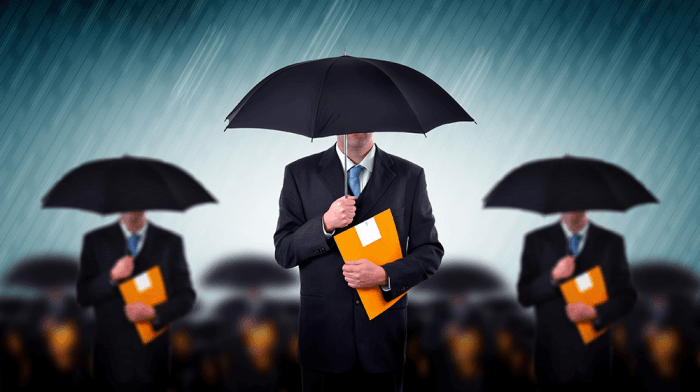Beyond the basics of liability insurance lies a crucial layer of protection for your business: business umbrella insurance. This often-overlooked policy acts as a financial safety net, shielding your company from potentially devastating lawsuits and judgments that exceed the limits of your primary insurance. Understanding its intricacies can be the difference between business continuity and financial ruin, a stark reality for many businesses facing unforeseen liability claims.
This guide delves into the world of business umbrella insurance, exploring its core functions, the types of businesses it benefits, and the critical scenarios where it proves invaluable. We’ll dissect coverage details, premium factors, the claims process, and offer insights into choosing the right policy to safeguard your business’s future.
What is Business Umbrella Insurance?

Business umbrella insurance provides an extra layer of liability protection beyond what your primary business insurance policies offer. It acts as a safety net, significantly increasing your coverage limits in case of a lawsuit or significant claim. This supplementary coverage can protect your business assets and personal finances from potentially devastating financial losses.
Business umbrella insurance is designed to broaden the scope of your existing liability coverage. It doesn’t replace your underlying policies (like general liability or professional liability insurance), but rather extends their limits. Think of it as a large, protective umbrella shielding your business from substantial liability claims that could exceed the limits of your primary policies.
Types of Businesses Benefiting from Umbrella Insurance
Many businesses can benefit from umbrella insurance, but certain types stand to gain the most. Businesses with high-risk activities, frequent public interaction, or significant assets are particularly well-served by this type of coverage. The higher the potential for liability, the greater the need for the broader protection an umbrella policy offers.
Examples of Crucial Situations
Consider a landscaping company whose employee accidentally damages a client’s expensive property. If the damage exceeds the general liability policy’s limits, the umbrella policy steps in to cover the excess costs. Similarly, a small consulting firm could face a massive lawsuit if a client alleges negligence leading to significant financial losses. The umbrella policy could be crucial in mitigating these substantial financial risks. Another example might involve a retail store facing a lawsuit after a customer slips and falls, resulting in serious injuries and high medical expenses. Without umbrella coverage, the business could face crippling debt.
Comparison of Business Umbrella Insurance to Other Types
The following table compares business umbrella insurance to other common types of business insurance, highlighting their key differences and purposes:
| Type of Insurance | Coverage | Purpose | Umbrella Insurance Relationship |
|---|---|---|---|
| General Liability | Bodily injury or property damage caused by business operations | Protects against claims of negligence | Extended coverage beyond general liability limits |
| Professional Liability (Errors & Omissions) | Financial loss due to professional mistakes or negligence | Protects professionals from claims of malpractice | Extended coverage beyond professional liability limits |
| Commercial Auto | Accidents involving business vehicles | Protects against liability for accidents involving company cars or trucks | Extended coverage beyond commercial auto liability limits |
| Business Umbrella | Excess liability coverage beyond underlying policies | Provides additional protection against significant liability claims | Independent policy that supplements existing coverage |
Coverage Provided by Business Umbrella Insurance

A business umbrella insurance policy provides crucial supplemental liability coverage, extending the protection offered by your underlying insurance policies, such as general liability and commercial auto insurance. It acts as a safety net, offering significantly higher liability limits and broader coverage for various incidents that could result in substantial financial losses for your business. This extra layer of protection is invaluable in today’s litigious environment.
Business umbrella insurance doesn’t replace your existing liability policies; rather, it enhances them. It kicks in *after* the limits of your primary policies are exhausted. Think of it as a financial parachute, providing a substantial cushion in the event of a catastrophic liability claim.
Types of Liability Covered
Umbrella policies typically cover a wide range of liability exposures, extending the protection of your primary commercial insurance policies. This includes bodily injury and property damage caused by your business operations, as well as advertising injury and personal injury. Specifically, this can encompass situations arising from employee actions, customer accidents on your premises, product defects, and professional negligence, depending on the specific policy and endorsements. The breadth of coverage helps protect your business from a wide spectrum of potential liability claims.
Gaps Filled by Umbrella Insurance
Many businesses find gaps in their existing insurance coverage. For example, general liability insurance may have relatively low liability limits, insufficient to cover the costs associated with a major accident involving significant injuries or property damage. Similarly, professional liability (errors and omissions) insurance might not cover all potential claims related to professional services rendered. Umbrella insurance effectively bridges these gaps, providing significantly higher limits and potentially broader coverage to address these shortfalls. Another common gap is coverage for incidents occurring outside the geographic area covered by the primary policy; an umbrella policy may offer more extensive geographic coverage.
Limits of Liability and Their Impact
The liability limits of an umbrella policy are crucial. These limits represent the maximum amount the insurer will pay for covered claims during the policy period. A higher limit provides greater protection against catastrophic losses. For example, a $1 million general liability policy coupled with a $5 million umbrella policy offers a total of $6 million in liability coverage. If a claim exceeds the $1 million limit of the general liability policy, the umbrella policy would cover the remaining amount up to the $5 million limit. Choosing appropriate liability limits depends on factors like the size and nature of your business, the level of risk involved in your operations, and your overall financial capacity. It’s advisable to consult with an insurance professional to determine the appropriate limits for your specific circumstances.
Examples of Covered Claims
A variety of claims could be covered under a business umbrella policy, often involving situations exceeding the limits of underlying insurance. Consider these examples: a customer suffers serious injuries due to a fall on your business premises resulting in significant medical expenses and lost wages; a product defect causes widespread damage and injuries to consumers; an employee’s negligent actions lead to a substantial lawsuit; or a false advertising claim results in substantial financial losses for a competitor. In each of these scenarios, the umbrella policy’s higher liability limits could be crucial in mitigating the financial impact on your business.
Illustrative Scenarios
Understanding the benefits of business umbrella insurance is best achieved through real-world examples. These scenarios illustrate how a seemingly small incident can escalate into significant financial liability, highlighting the crucial role of umbrella coverage in protecting your business.
Customer Injury on Premises
Imagine a busy Saturday at “The Coffee Corner,” a bustling café. A customer, Mrs. Gable, trips over a loose floorboard near the entrance, fracturing her wrist. While The Coffee Corner has general liability insurance, Mrs. Gable’s medical bills total $50,000, and she sues for an additional $200,000 for pain and suffering, claiming negligence on the café’s part. The Coffee Corner’s general liability policy has a limit of $300,000, but legal fees alone quickly reach $75,000. Without umbrella insurance, The Coffee Corner would face a significant shortfall. However, with a $1 million umbrella policy, the additional costs are fully covered, protecting the business from financial ruin. The umbrella policy covers the excess legal fees and the settlement amount exceeding the general liability limit, leaving The Coffee Corner financially secure.
Product Liability Claim
“Handy Hardware,” a retailer selling power tools, experiences a product liability claim. A customer, Mr. Jones, purchases a drill press from Handy Hardware. Due to a manufacturing defect, the drill press malfunctions during use, causing Mr. Jones a severe hand injury requiring extensive surgery and rehabilitation. Mr. Jones’s medical expenses exceed $150,000, and he files a lawsuit against Handy Hardware for $500,000, citing negligence and product defects. Handy Hardware’s general liability policy covers $250,000, but the legal costs and the damages far exceed this amount. Their $2 million umbrella insurance policy steps in, covering the remaining costs, protecting Handy Hardware from crippling debt and ensuring the continuation of their business. The umbrella policy not only covers the excess damages but also covers substantial legal defense costs associated with the lawsuit.
Ultimate Conclusion

In the unpredictable landscape of business operations, comprehensive risk management is paramount. Business umbrella insurance emerges as a cornerstone of this strategy, providing an essential layer of protection against significant liability exposures. By carefully considering the factors discussed – from coverage limits and premium costs to the claims process and policy selection – businesses can proactively mitigate potential financial catastrophes and ensure long-term stability and peace of mind. Investing in a robust umbrella policy isn’t just about insurance; it’s about safeguarding the future of your enterprise.
Essential Questionnaire
What is the difference between a personal and business umbrella policy?
Personal umbrella policies cover personal liability, while business umbrella policies cover liability related to business operations. They have different coverage limits and exclusions.
Can I get umbrella insurance if I have a poor claims history?
Yes, but it might be more expensive, or insurers may be less willing to offer coverage. It’s crucial to be transparent about your claims history when applying.
How long does it take to file a claim?
The timeframe varies depending on the complexity of the claim. However, promptly reporting the incident and providing necessary documentation will expedite the process.
What types of businesses need umbrella insurance the most?
Businesses with high liability risks, such as those in construction, healthcare, or transportation, generally benefit most. However, any business could potentially benefit from the added protection.
How much does business umbrella insurance cost?
Premiums vary significantly based on factors like business size, industry, claims history, and coverage limits. Obtaining quotes from multiple providers is recommended.